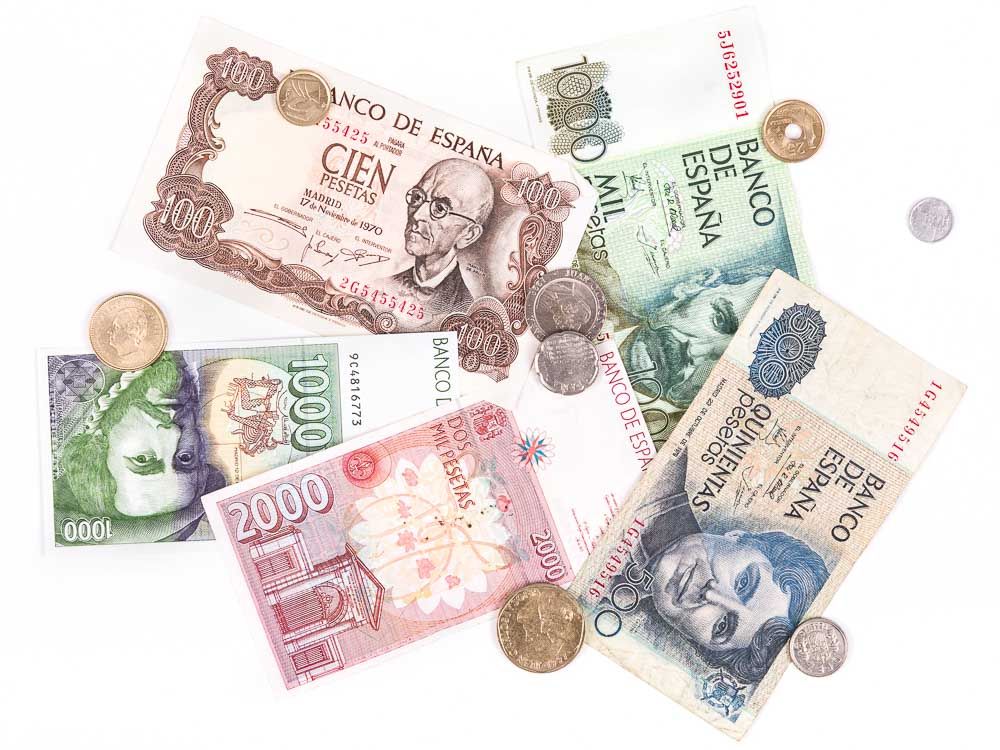Are you interested in historical currency and learning more about how different nations and countries developed their independence through curating unique currencies and economy-boosting activities?
Then you’re lucky because today’s blog is about the Spanish Peseta.
Despite falling out of circulation in 2002 when the Euro replaced it, the Spanish Peseta remains one of the more exciting currencies on our website – and in this blog, we’re telling you why.
Shared under the code ESA and then ESP from 1981 until 2002, the Peseta was used as Spain’s currency for over 130 years. Here are five facts you may not know about the currency.
1. The Peseta never had a symbol
Most of us use a symbol to decipher which currency a price or amount of money is listed in – and let’s be honest, that symbol is pretty essential!
Knowing if something is in pounds (£), dollars ($), or something else can transform something from affordable to exceptionally expensive with just a single character.
So, the fact that the Spanish Peseta never had its own symbol is fascinating. Instead, amounts listed in Peseta were labelled with ‘pta’ or ‘ptas’.
2. The Bank of Spain believes there are still 1.7 billion ptas out in the world
Here at Leftover Currency, we find old and outdated currency very interesting to study and look at – and it seems like lots of consumers out there agree!
It has been over 20 years since the Peseta was phased out and replaced by the Euro, but the Bank of Spain has claimed that it thinks there could be upwards of 1.7 billion Spanish Pesetas still out there in people’s wallets and money jars.
3. At the time of transition, 1 Euro = 166 Peseta
One of the best ways to decipher and discuss old currency is through its exchange rate.
In 2002, when the Peseta was phased out and replaced by the Euro, a single Euro equated to 166 Peseta. The exchange rate was such that the 1/100 denomination of the Peseta was indefinitely impacted along with inflation – more on that in the next point.
4. The centimo fell out of circulation as a result of inflation
To understand the makeup of the Peseta, you need to know a little more about how it breaks down.
Like a British pound is made up of 100 pennies, the Peseta is made up of 100 centimos.
However, in 1983, inflation meant that the centimo was virtually redundant and was withdrawn from circulation.
A few other terms worth noting here include the ‘perra chica’, which equates to 5 centimos, and the ‘perra gorda’, equivalent to 10 centimos.
5. The highest banknote equated to 10,000 Pesetas
Finally, the banknotes and coins that made up Spain’s currency.
The smallest banknote available was the 200 Peseta note, which was rarely used. Most people had banknotes for 1,000 Peseta and higher, rising to 10,000 Peseta (around £60 using the currency exchange for 2002).
The smallest coin available was 1 Peseta. However, it was more likely that people had coins equating to 5 Peseta or more. The highest coin available was worth 2,000 Peseta.
What can you do with Spanish Peseta today?
If you are one of the households or travellers still with some Spanish Peseta, consider this a sign to exchange it back into British pounds through Leftover Currency.
Using our online system, you can simply enter the amount you have in Peseta and let our website do all the hard work for you – producing a quote and letting you know the following steps to send your cash and receive a bank transfer in return. Alternatively, you can donate the money to one of our partner charities via the website.
If you come across any currencies that we don’t list on our website, let us know! We are always keen to extend our service and ensure that we cover all bases and currencies worldwide.

 Loading
Loading